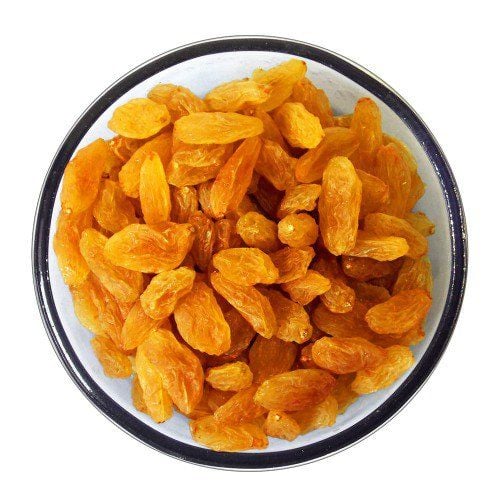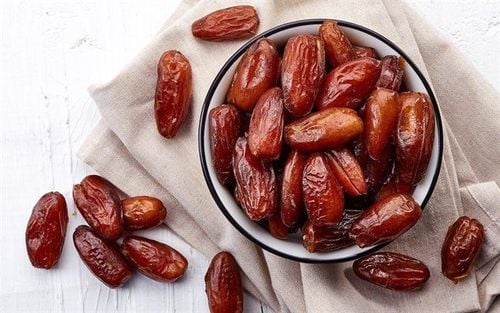Some people consider dried fruit to be a nutritious, healthy snack, while others believe that dried fruit is no better than candy. This article will provide more detailed information about dried fruit and the health effects of consuming this food.
1. What is dried fruit?
Dried fruit has had almost all of its water content removed through drying methods. The fruit shrinks during the drying process, leaving behind a small, energy-dense dry fruit.Plumare ranked as the most popular dried fruit, followed by dates, prunes, figs and apricots.
Other dried fruits such as: Mango, pineapple,cranberry, bananas and apples… can be processed into sugar-coated candy form.
The shelf life of dried fruit is longer than that of fresh fruit and is considered a convenient snack, especially on long trips without a refrigerator for preservation and storage.
2. Dried fruit is rich in micronutrients, fiber and antioxidants
Information about dried fruit is mixed . However, dried fruit is highly nutritious. A serving of dried fruit contains the same amount of nutrients as fresh fruit, but the fruit is concentrated in a much smaller package. By weight, dried fruit containsfiber, vitamins and minerals are 3.5 times higher than fresh fruit. Therefore, a serving of dried fruit can provide the body with a large proportion of the daily recommended vitamin and mineral content, such as:FolateHowever, there are some exceptions for other nutritional components, such as: Contentvitamin Csignificantly reduced when the fruit is dried.
Dried fruit in general contains a lot of fiber in its nutritional composition and is a source ofantioxidantgreat for the body, especially polyphenols. Polyphenol antioxidants are known to be linked to health benefits such as: Improved blood flow, better digestive health, reduced oxidative damage and also reduced risk of many diseases.
3. Health effects of dried fruit
Is it good to eat dried fruit ? Some studies investigating the benefits of dried fruit have shown that people who eat dried fruit tend to weigh less and consume more nutrients than those who do not include dried fruit in their diet. However, these studies are observational in nature, so they cannot prove that dried fruit can improve weight.
Dried fruit also provides quite a few plant compounds, including powerful antioxidants.
4. Raisins may help reduce the risk of certain diseases
The nutritional profile of raisins is rich in fiber, potassium, and various health-promoting plant compounds. Raisins are also valuableglycemic indexlow to medium and low insulin index. Therefore, raisins will not cause a spike in blood sugar or insulin levels after meals. Raisins have the following effects:
- Lower blood pressure
- Improve blood sugar control
- Reduces signs of inflammation in the body while lowering blood cholesterol levels
- Leads to increased feeling of fullness
All of these factors will contribute to reducing the risk of developingtype 2 diabetesand heart disease .

5. Prunes are considered a natural laxative and can help fight disease.
Dried plums are classified as a fairly nutritious food, with nutritional content rich in fiber, potassium, beta-carotene (vitamin A) andvitamin K. Furthermore, the natural laxative effect of prunes provides many benefits to the body. This is explained by the high content of fiber and a sugar alcohol called sorbitol, which is found naturally in some fruits.
Using prunes in your diet has been shown to improve stool frequency and consistency. Prunes are considered to be even more effective at relieving constipation than psyllium, another popular remedy. Prunes are a rich source of antioxidants, and in addition, prunes can inhibit oxidative stress.cholesterol LDLand help prevent heart disease and cancer. Prunes are also rich in the mineral boron, which may help fight osteoporosis. Furthermore, prunes are also filling and do not causeblood sugar spike.
6. Dates can benefit pregnancy and help prevent certain diseases
Dates are extremely sweet and provide many essential nutrients for the body such as: Fiber, potassium, iron and some plant compounds. Of all the dried fruits, including dried fruits for weight loss , dates are classified as detox dried fruit foods with a rich source of antioxidants, contributing to reducing oxidative damage in the body.
Dates have a low glycemic index, meaning that eating them will not cause a spike in blood sugar. Date consumption has also been studied in relation to pregnancy and labor. Eating dates regularly or in the last few weeks of pregnancy can help dilate the cervix, as well as reduce the need for labor.
One study had women eat dates during the last few weeks of pregnancy and the results were: Only 4% of women who ate dates needed to go into labor, compared to 21% of those who did not eat dates.
7. Dried fruit is high in natural sugar and calories.
Dried fruit or detox dried fruit tends to contain a significant amount of natural sugar. Because the water in fresh fruit has been removed from dried fruit, all the sugar and calories are concentrated in a much smaller package. As a result, dried fruit is rich in calories and sugars, including: Glucose and fructose. Natural sugar content of dried fruit:
- Raisins: 59%.
- Day: 64–66%.
- Prunes: 38%.
- Apricot: 53%.
About 22–51% of the sugar in dried fruit is fructose. High fructose consumption can have negative health effects, including increased risk of weight gain, type 2 diabetes, and heart disease.
You should avoid dried fruit with added sugar (candied fruit)
To make some dried fruits taste sweeter and more appealing, these dried fruits are coated with sugar or syrup before being dried. Dried fruits with added sugar are also called “candy” fruits. Added sugar to foods in general and dried fruits in particular has been repeatedly shown to be harmful to health, increasingrisk of obesity ,heart-related diseases or even lead to cancer.
To avoid dried fruit that contains added sugar, you need to read the ingredients and nutrition information on the packaging.
8. Dried fruit can also contain sulfites, and may be contaminated with fungi and toxins.
Some manufacturers add sulfite preservatives to dried fruit, which help make the dried fruit look more appealing, preserve the fruit, and prevent discoloration. This process is mainly used for brightly colored fruits, such as apricots and raisins.
Some people may be sensitive to sulfites, which can cause conditions such as stomach cramps, skin rashes, and asthma attacks after eating dried fruit containing this compound. To avoid sulfites, choose dried fruit that is brown or grayish in color instead of light-colored.
Improperly stored and handled dried fruits can also be contaminated with fungi, aflatoxins and other toxic compounds and will have harmful effects on health when consumed.
Dried fruit has its pros and cons, just like any other food. Dried fruit can boost your fiber and nutrient intake, and provide your body with a large amount of antioxidants. However, dried fruit is also high in sugar and calories, and can cause problems when eaten in excess.
For this reason, dried fruit should be eaten in small amounts, preferably alongside other nutritious foods. You should not eat a handful, as it is easy to get too many calories from dried fruit. Additionally, dried fruit is a high-carb food, making it unsuitable for a low-carb diet.

